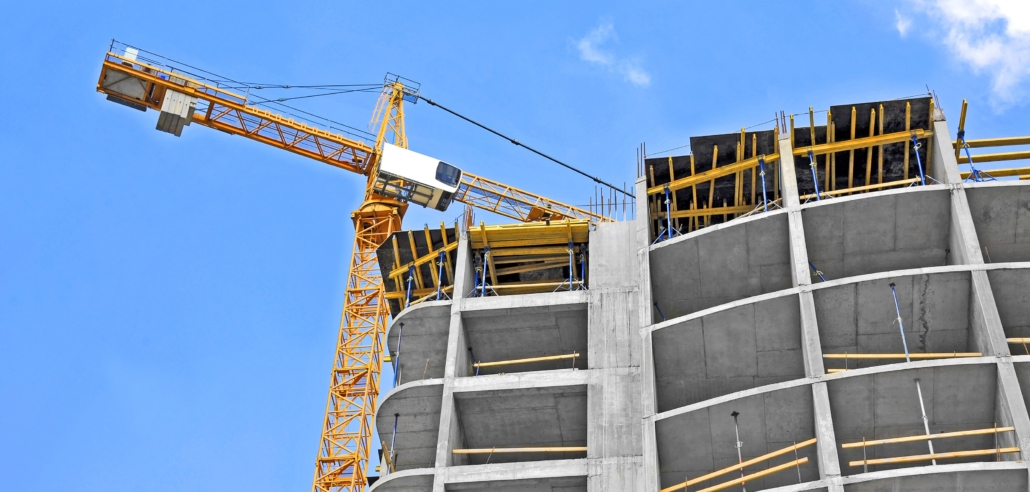
New WorkSafeBC Video: Flytable Lift Safety
// August 14, 2025
A Technical Look at One of Construction’s Most Complex Lifts
WorkSafeBC’s new video Flytable Safety takes an in-depth look at one of the highest risk crane operations in high-rise construction.
Flytables, or flyforms, are large preassembled concrete forming platforms that support the concrete slabs in a high-rise building under construction and are lifted from one level to the next by a crane.
While efficient for construction, their weight, changing centre of gravity, size, and complicated lift requirements and procedures make them a critical lift under WorkSafeBC regulations which requires rigorous planning, direct supervision, and flawless coordination.
Four Phases of a Flytable Lift
The video breaks the most common flytable process into four distinct technical phases:
- Dropping
Lowering the table from the hardened slab. - Rolling
Attaching wheels or casters, then moving the table partially out of the building for full crane attachment. - Flying
Hoisting the table clear of the structure and lifting it to the next level. - Landing
Securing the table in place before disconnecting from the crane.
Each phase presents unique hazards, from load instability to potential structural failure, making engineered controls and crew coordination essential.
Engineering and Manufacturer Specifications
Safe operation begins with site-specific engineered drawings and manufacturer’s instructions. These dictate the exact dimensions, assembly methods, load capacities, and cycling procedures. Inspections by certified engineers prior to concrete pours ensure that the formwork meets design and safety requirements.
Following manufacturer specifications — not just during assembly but also in ongoing maintenance — ensures the tables remain within structural limits.
“Safe operation begins with site-specific engineered drawings and manufacturer’s instructions.”
Risk Management and Controls
The hazards are significant when working with flytables: falls from height, loss of load control, wind effects, falling objects and more.
To manage these risks, crews use:
- Critical lift plans considering weight, rigging, and environmental limits such as high wind.
- Physical barriers such as curbs and kicker blocks to stop uncontrolled rolling.
- Brake lines to control table momentum.
- Tethered tools and materials, exclusion zones, and catch nets to prevent falling object hazards.
- Special handling plans for nontypical or corner tables with awkward shapes or reduced stability.
Communication and Coordination
A successful flytable operation relies on multi-level communication between crane operators, riggers, spotters, workers, and site management on multiple floors. Radio communication should be continuous, with confirmation loops to ensure instructions are heard and understood. Morning pre-lift meetings review the lift plan, exclusion zones, and any site-specific changes.
Change Management
Unexpected conditions require stopping the work, reviewing drawings and procedures, and involving engineers if necessary. Many past incidents have been linked to changes that were not fully understood or coordinated. The “stop and discuss” approach is critical.
“Successful flytable operation relies on multi-level communication between crane operators, riggers, spotters, and workers, and site management on multiple floors.”
Inspections and Maintenance
Tables and rigging equipment are inspected at multiple stages and by different people:
- After each cycle.
- Before concrete pours.
- Regularly per manufacturer schedules or qualified person recommendations.
Checks include structural integrity, pin security, spindle condition, and reshoring placement.
Training and Experience
Workers must have training appropriate to their role — from fall protection to rigging procedures. New or young workers should first observe and assist under the guidance of experienced crew members.
WorkSafeBC’s video Flytable Safety is a downloadable resource that can be viewed offline and can be incorporated into your training program.
A Prime Contractor’s Role
Prime contractors coordinate activities, ensure compliance systems are in place, review drawings and procedures, and verify inspections. They are not passive observers — they actively support hazard mitigation and quality control.
Visit WorkSafeBC’s page for more information and resources.




